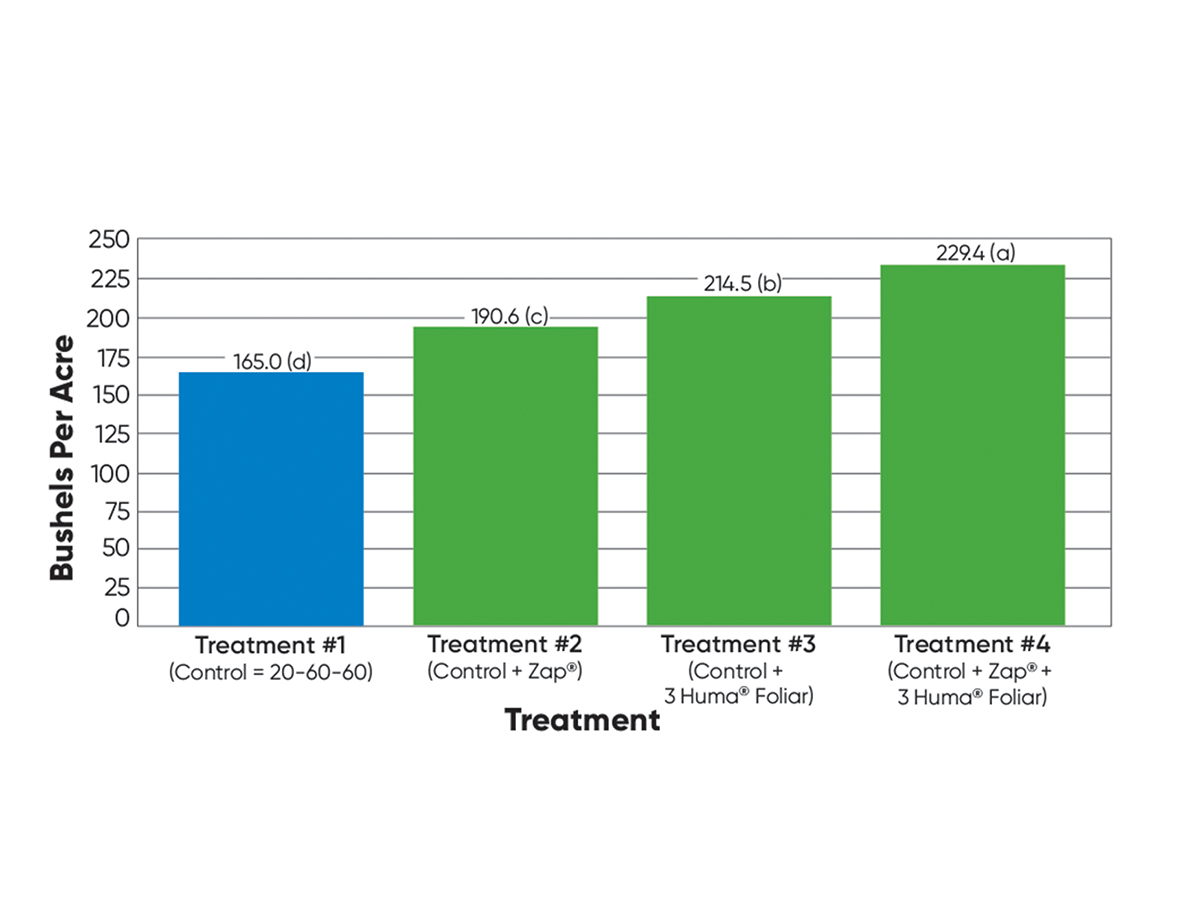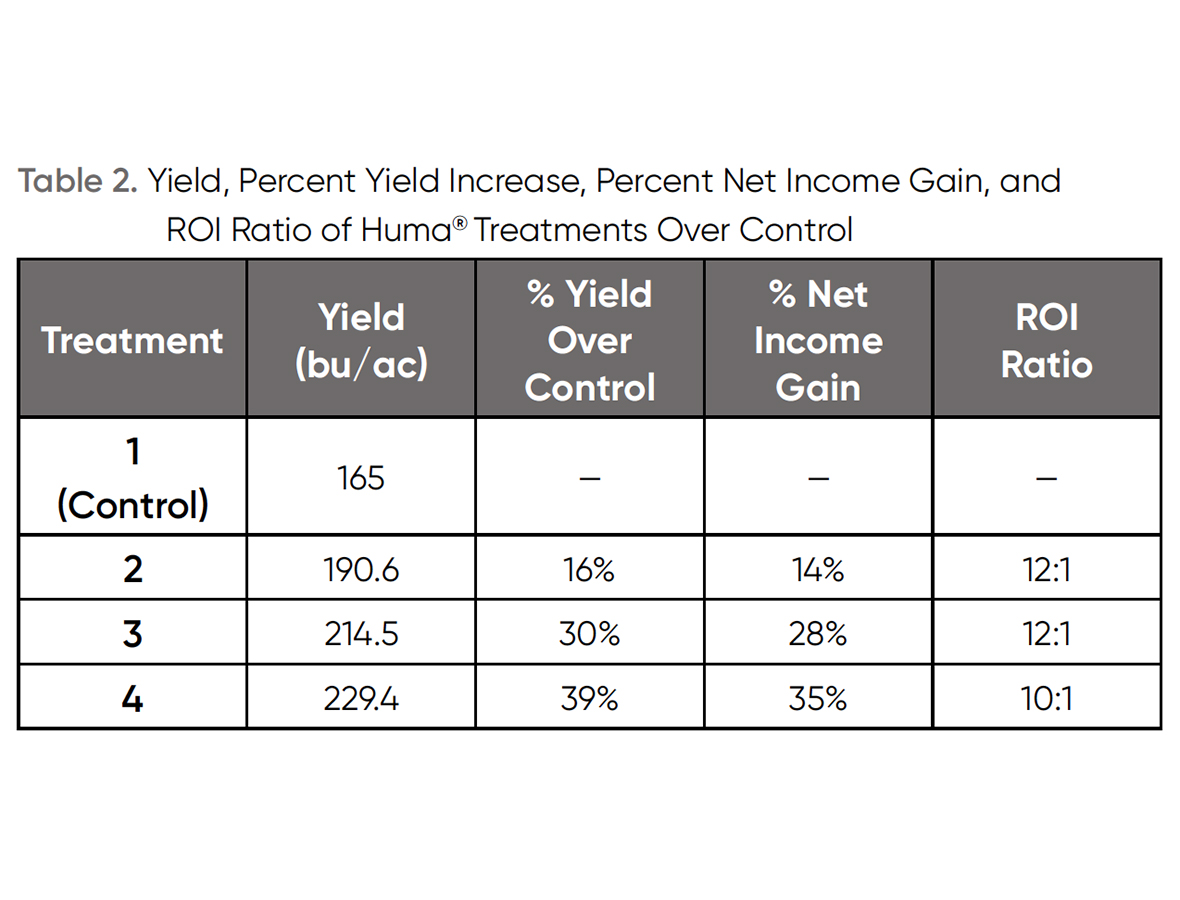Objective
This field trial was conducted in order to compare sweet potato crop yields and return on investment (ROI) obtained when a Huma® soil product (Zap®, for feeding soil biology and improving soil fertility) and 2 applications of 3 Huma® foliar nutrients (Jackpot®, Calcium, and Super Potassium®) were applied in various combinations.
Materials & Methods
This trial on sweet potatoes (Ipomoea batatas, Var. Beauregard) was conducted in Memphis, Tenn., in a randomized complete block study with 4 replications. The sweet potatoes were machine transplanted into conventional-till silt loam soil 12.6' x 30' plots. The sweet potatoes were planted on June 25.
Four treatment programs were compared: (Treatment 1) the grower's standard preplant program of 20-60-60; (Treatment 2) the grower's standard plus Huma® Zap® applied in-furrow; (Treatment 3) the grower's standard plus 3 Huma Gro® foliar-applied products—Jackpot®, Calcium, and Super Potassium®—applied at 30 days and again at 15 days prior to harvest; and (Treatment 4) the grower's standard plus Huma Gro® Zap® plus 3 Huma® foliar-applied products applied at 30 days and again at 15 days prior to harvest.

Table 1. Control and 3 Huma® Treatment Programs
Results
Treatment 4 resulted in the highest yield (229.4 bu/ac) compared with the Control (165 bu/ac), with Treatment 3 next highest at 214.5 bu/ac and Treatment 2 at 190.6 bu/ac. Each treatment yield showed a statistically significant difference from the other.
Based on a sweet potato market price of $15/bu, Table 2 shows percentage of yield increase and net income gain, along with the return on investment (ROI) ratio, for the 3 treatments over the control. Treatment 4 showed the highest percentage of yield increase over the control (39%). An ROI ratio of 12:1 occurred for Treatment 2 and Treatment 3, with an ROI ratio of 10:1 for Treatment 4.

Figure 1. Yield Results in Bushels per Acre

Table 2. Yield, Percent Yield Increase, Percent Net Income Gain, and ROI Ratio of Huma® Treatments Over Control
Conclusions
Micro Carbon Technology® in Huma® soil and foliar products contributed to significant sweet potato yield and revenue increases in all three of the Huma® treatments evaluated in this study. Though adding Huma® Products increased initial costs, the greater yields and net profits generated by the treatments resulted in a return on investment that paid for the cost and application of the Huma® products many times over ($10–$12 dollars returned for every $1 spent).

